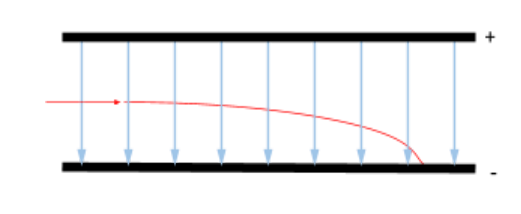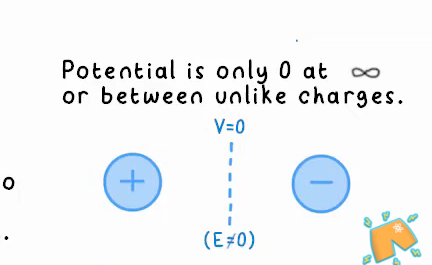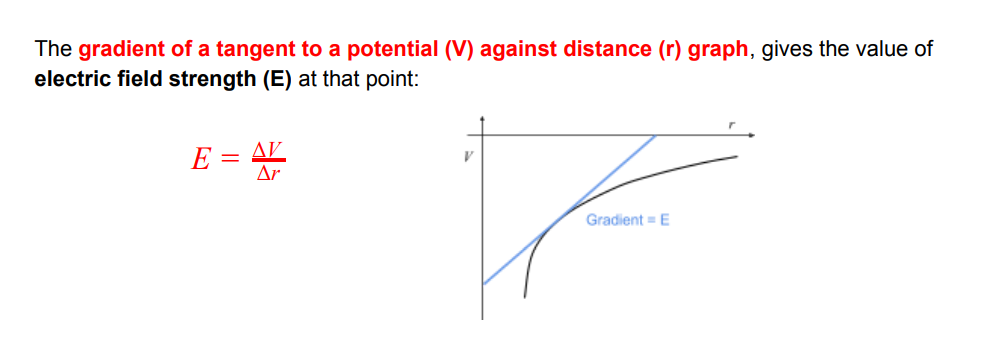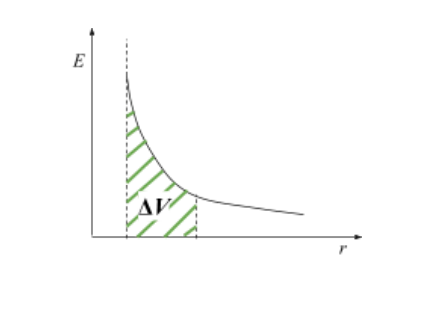physics - elec fields
1/34
There's no tags or description
Looks like no tags are added yet.
Name | Mastery | Learn | Test | Matching | Spaced |
|---|
No study sessions yet.
35 Terms
in a field, what type of force is felt/present
non contact force
which objects do electric fields affect
those with a charge
can the electric field force be positive or negative, or is it always one or the other
can be positive or negative
what is coulombs law (words)
the magnitude of the force between 2 point charges in a vacuum is directly proportional to the product of their charges and inversely proportional to the square of the distance between the charges
what is the equation for coulombs law

when dealing with coulombs law equation, what are 2 assumptions / things we are allowed to do to use the equation
treat air as a vacuum
we can assume that the charge acts at the centre of the sphere
what happens to like charges, and what happens to opposite charges
like charges repel
opposite charges attract

whats larger for particles? their electrostatic forces (magnitude) or their gravitational forces (magnitude)
their electrostatic forces
what is the definition of electric field strength
what is its symbol
electric field strength (E) is the force per unit charge experienced by an object in an electric field
electric field strength is constant in a ______ field, but varies in a ______ field
uniform
radial
what are the 3 equations used to calculate electric field strength.
when can each be used?
the one on left can be used generally
the middle is only for uniform fields
the one on right is only for radial fields

in electric fields, can field strength ever be 0?
if so, where?
yes it can, in between 2 like charges
draw a uniform electric field and draw a radial electric field.
where do the field lines go? is it +ve to -ve or -ve to +ve

for elec fields, what do the field lines show?
the direction of force acting on a positive charge
derive the work done equation for moving a charged particle between parallel plates

when a charge is fired at a right angle to the field, what happens
the particle will accelerate, and will follow a parabolic shape

in this diagram, is the charge that is fired into the parallel plates +ve or -ve
must be a positive charge as follows a parabolic shape towards negative plate, and follows the field line directions
define the (absolute) electric potential
the work done per unit positive charge at that point in the field
where is electric potential max (in magnitude)
at the surface of a charge
what is the electric potential at infinity, or between unlike charges
0

what is the equation to find the electric potential which is ONLY used in a radial field

the charge of the potential (in the sense of is it +ve or is it -ve) depends on what
the sign of the charge of Q
when the charge is positive, what is the potential
positive
when the charge is negative, what is the potential?
negative
when the potential is positive, is the force attractive or repulsive
repulsive
when the potential is negative, is the force attractive or repulsive
attractive
draw the v against r graph for repulsive force, and for attractive force (on separate graphs)

using the equation, (for a radial field), based on the graph how do you find the change in potential?

how do u get the electric field strength (E) from the graph of v against r
the gradient is the electric field strength
the gradient can be found using the tangent
simple as that
what is the equation for electric field strength based on the graph

what is the work done equation using change in potential

is work done when a charge moves along an equipotential
NO. 0 WORK DONE
draw the graph of electric field strength (E) against r

what does the area under the graph of E against r represent
the potential difference (change in potential)
what do you set equal to each other for distance of closest approach
kinetic energy and electric potential energy